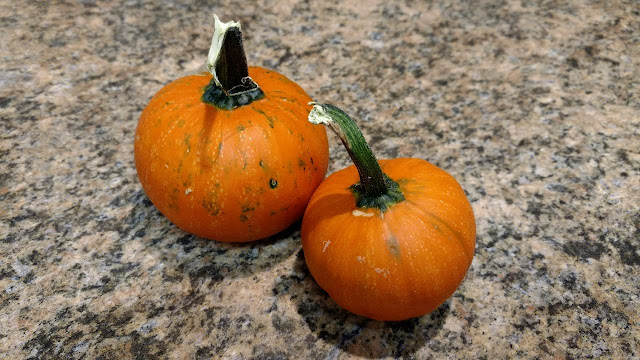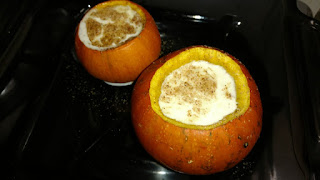
Recipe: Turn tiny pumpkins into fun fall side dish

|
What do you do with little pumpkins?
Every October, these baseball-size orange orbs pop up at farmstands and in markets. They’re attractive, piled in a basket or arranged in a harvest display. But how do you eat them?
Treat mini pumpkins like what they are: Winter squash. Just about any recipe for acorn squash, for example, can be adapted to a mini pumpkin, too.
Like any vegetable, some varieties are tastier than others. (Flat, hard minis border on “decorative use” only.) For cooking, choose mini pumpkins with smooth skin and round shape; they have better texture and more flesh.
This summer, I grew a late harvest of Wee-B-Little pumpkins, grown from seed (available from JohnnySeeds.com). The 1999 All-America Seed Selection winner, this compact semi-bush dwarf pumpkin thrives in a relatively small space; the whole plant covers less than 3 feet square.
Planted in early July, Wee-B-Little has been prolific with several 3- to 4-inch round pumpkins, weighing just under 1 pound each. They’re adorable.
My original intention was to carve a bunch of mini jack-o-lanterns, but the seed cavity inside each Wee-B-Little was too small and the walls too thick.

|
Comments
0 comments have been posted.Sacramento Digs Gardening to your inbox.
Sites We Like
Garden Checklist for week of May 5
Survey your garden after the May 4 rainstorm. Heavy rain and gusty winds can break the neck of large flowers such as roses. Also:
* Keep an eye on new transplants or seedlings; they could take a pounding from the rain.
* Watch out for powdery mildew. Warmth following moist conditions can cause this fungal disease to “bloom,” too. If you see a leaf that looks like it’s dusted with powdered sugar, snip it off.
* After the storm, start setting out tomato transplants, but wait on the peppers and eggplants (they want warmer nights). Pinch off any flowers on new transplants to make them concentrate on establishing roots instead of setting premature fruit.
* Trim dead flowers but not leaves from spring-flowering bulbs such as daffodils and tulips. Those leaves gather energy to create next year's flowers. Also, give the bulbs a fertilizer boost after bloom.
* Pinch chrysanthemums back to 12 inches for fall flowers. Cut old stems to the ground.
* Mulch around plants to conserve moisture and control weeds.
* From seed, plant beans, beets, cantaloupes, carrots, corn, cucumbers, melons, pumpkins, radishes and squash.
* Plant onion sets.
* In the flower garden, plant seeds for asters, cosmos, celosia, marigolds, salvia, sunflowers and zinnias. Transplant petunias, zinnias, geraniums and other summer bloomers.
* Plant perennials and dahlia tubers for summer bloom.
* Don’t wait; plant summer bulbs, such as gladiolus and tuberous begonias.
* Harvest cabbage, lettuce, peas and green onions.